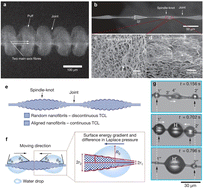Research progress of bionic fog collection surfaces based on special structures from natural organisms
Abstract
With the increasing shortage of water resources, people are seeking more innovative ways to collect fog to meet the growing need for production and the demand for livelihood. It has been proven that fog collection is efficient for collecting water in dry but foggy areas. As a hot research topic in recent years, bionic surfaces with fog collection functions have attracted widespread attention in practical applications and basic research. By studying natural organisms and bionic surfaces, more avenues are provided for the development of fog collection devices. Firstly, starting from biological prototypes, this article explored the structural characteristics and fog collection mechanisms of natural organisms such as spider silk, desert beetles, cactus, Nepenthes and other animals and plants (Sarracenia, shorebird and wheat awn), revealing the fog collection mechanism of the natural organisms based on microstructures. Secondly, based on the theory of interfacial tension, we would delve into the fog collection function's theoretical basis and wetting model, expounding the fog collection mechanism from a theoretical perspective. Thirdly, a detailed introduction was given to prepare bionic surfaces and recently explore fog collection devices. For bionic surfaces of a single biological prototype, the fog collection efficiency is about 2000–4000 mg cm−2 h−1. For bionic surfaces of multiple biological prototypes, the fog collection efficiency reaches 7000 mg cm−2 h−1. Finally, a critical analysis was conducted on the current challenges and future developments, aiming to promote the next generation of fog collection devices from a scientific perspective from research to practical applications.

- This article is part of the themed collection: 2023 Reviews in RSC Advances


 Please wait while we load your content...
Please wait while we load your content...